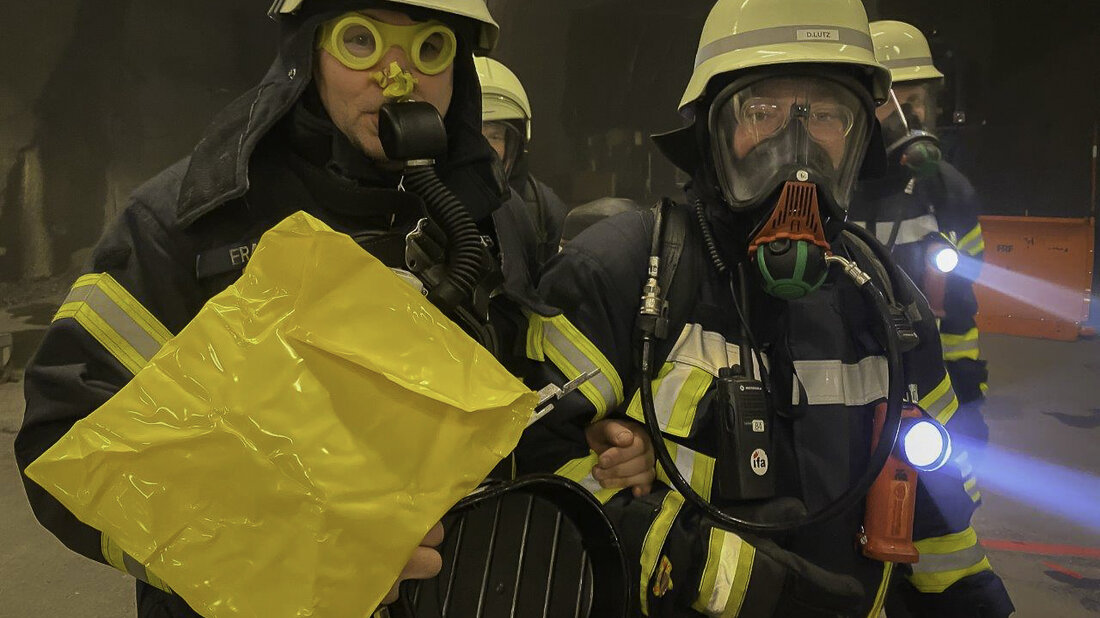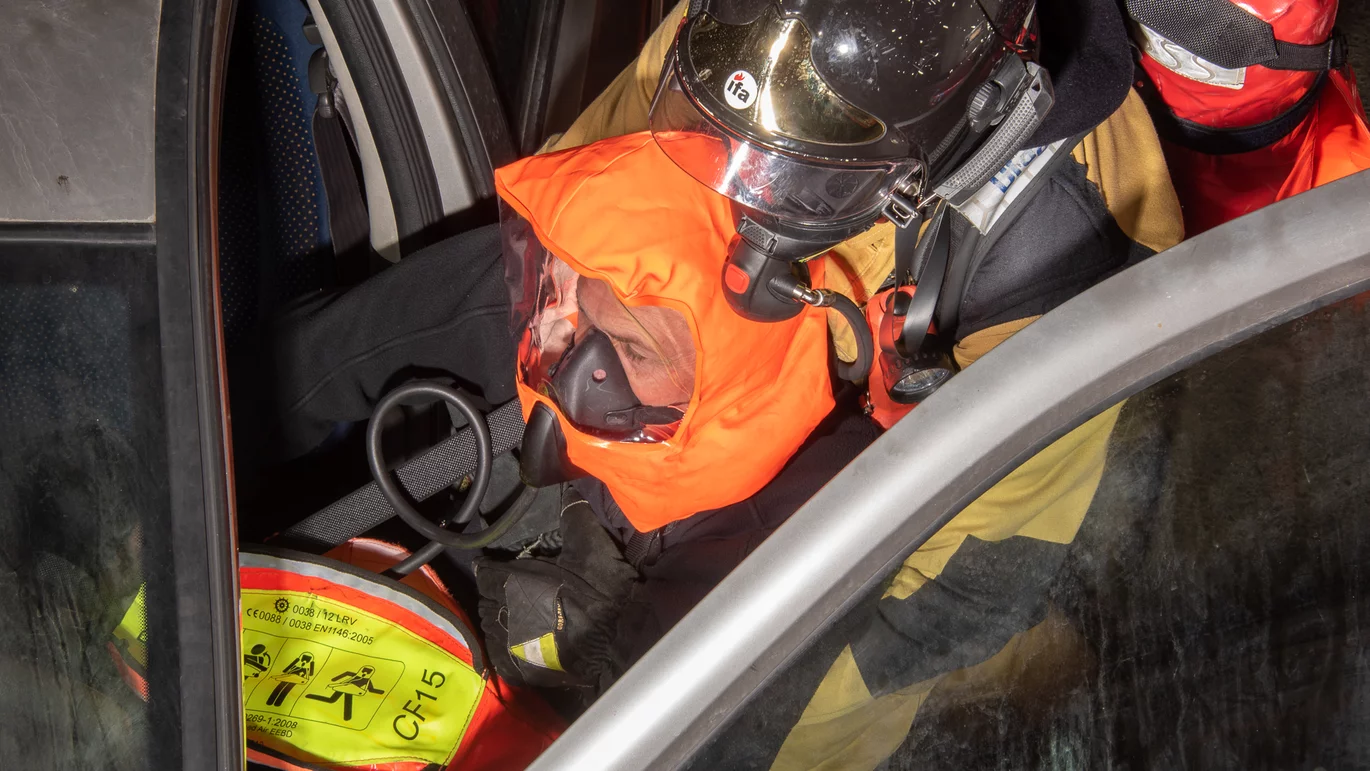When rescuing people from smoke hazards, fire services use fire escape hoods as standard. Respiratory devices with filters protect the persons to be rescued from toxic fire gases by filtering them out. However, if the air breathed in through the filter contains too little oxygen, there is a risk of severe health damage after only a short time. This article explains why fire escape hoods with compressed air should be used for long rescue routes, which can supply the persons to be rescued with sufficient oxygen for 10 to 15 minutes.
Confusing variety of terms
The devices that are the subject of this article have many names. Often the name of the product owned by a fire service is used, and as several companies are producing these devices, there are several designations known to emergency services. The EN 402 designates the devices with compressed air supply as self-contained open-circuit compressed air breathing apparatus for escape, which explains the use of shorter, more handy names. We use the designation fire escape hood. This is to express: It is a hood that is pulled over the entire head and used by the fire services for rescue.
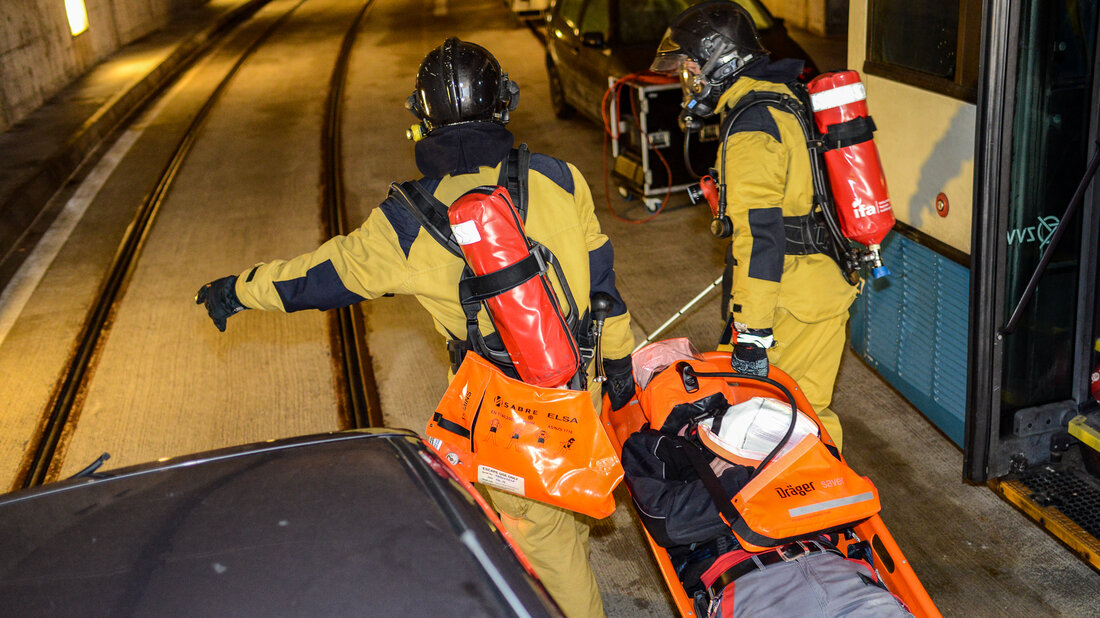
Respirators
There are two fundamentally different types of fire escape hoods: respirators and breathing apparatus. Respirators are equipped with an attached filter, filtering the ambient air. These protect the wearer against carbon monoxide and many other toxins, especially hydrocyanic acid and hydrochloric acid. In addition, the design of the hood protects the eyes against irritants.
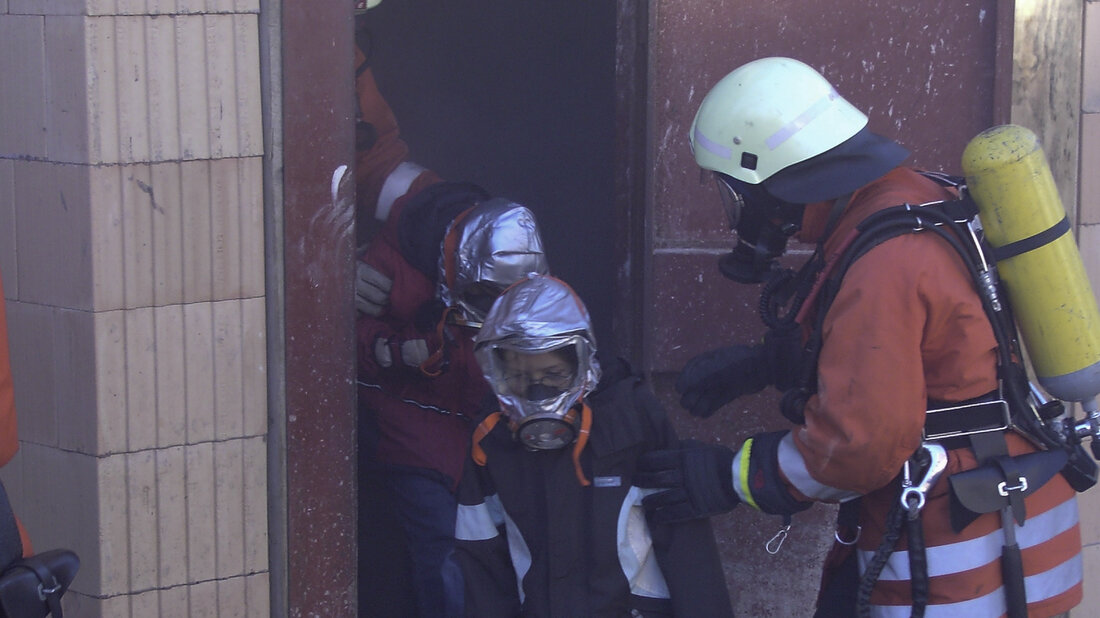
However, the air breathed in through the filter cannot contain more oxygen than in the ambient atmosphere. In the case of short escape routes, for example, through a stairwell into the open air, this disadvantage can be accepted because the fire smoke usually still contains at least small amounts of oxygen. However, after a few minutes, on long escape routes, such as in a road or railway tunnel, the low oxygen content of the smoke can cause severe health damage.
Breathing apparatus
Fire escape hoods with compressed air supply are also called breathing apparatus. They completely isolate the wearer from the surrounding atmosphere. Independent of the ambient air, the person to be rescued is supplied with normal breathing air from a compressed air cylinder via the hood. Contrary to popular belief, this does not contain pure oxygen but normal breathing air with an oxygen content of about 21%.
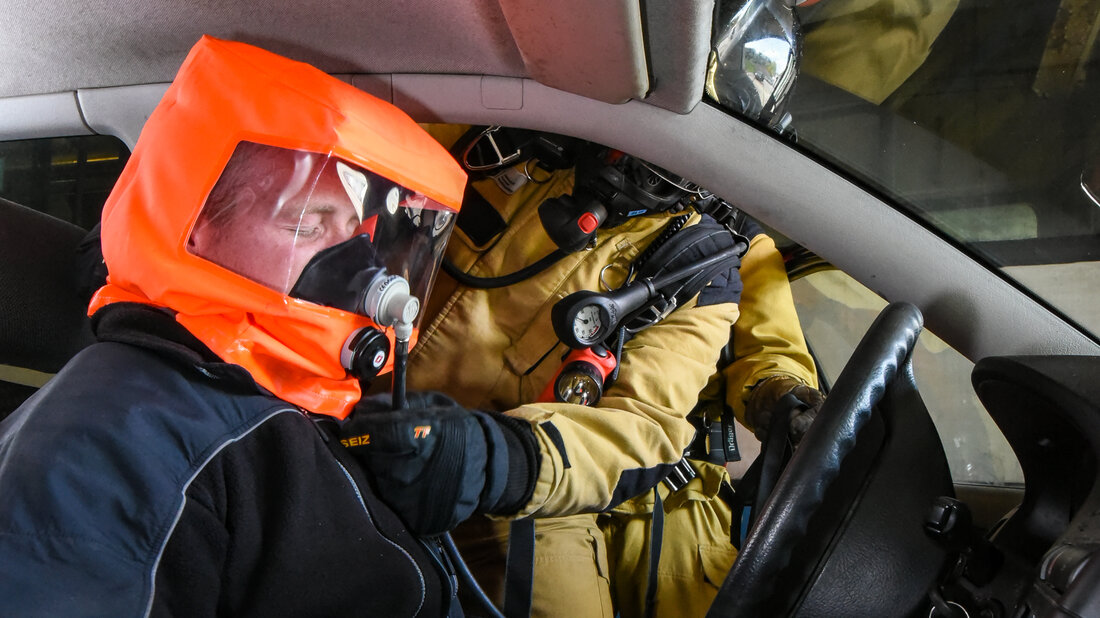
Handling needs to be practised
The operation of the fire escape hoods themselves is uncomplicated. Unpack, activate and place on the person to be rescued. However, the latter should be practised: The hood is fitted with a flexible neck collar, designed to fit snugly around the neck to seal the device sufficiently. To put on the mask, the collar must be stretched with some force so that it can be pulled over the forehead and nose of the person to be rescued. The procedure is not exactly pleasant for the person concerned, as the picture below from a training drill shows.
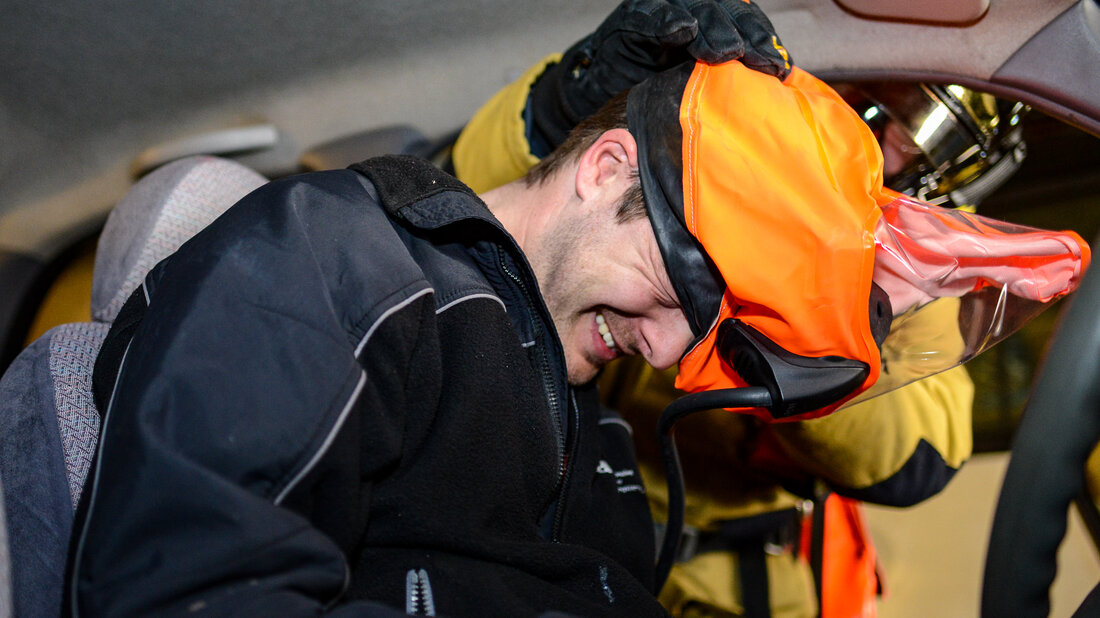
BAs with rescue hoods and oxygen self rescuers
The International Fire Academy mainly uses the equipment described above for training and practice. In everyday practice, two more types are used.
On the one hand, there are oxygen self rescuers, which filter the ambient air and add pure oxygen to the purified air. These devices are used, for example, in mining for self-rescue, but also by some fire services for rescuing others.
